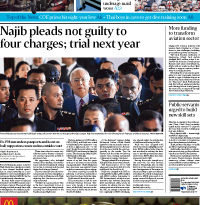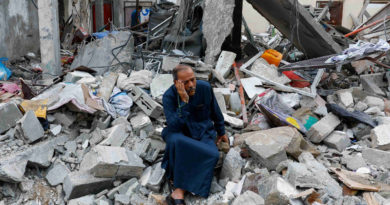PHOTOS OF THE DAY: Thaipusam festival
Chariot of Murugan during Thaipusam festivities in Malaysia
…
Over 18,000 devotees take part in Thaipusam festival
The devotees perform penitential acts on their walk of faith for Hindu god Lord Murugan.

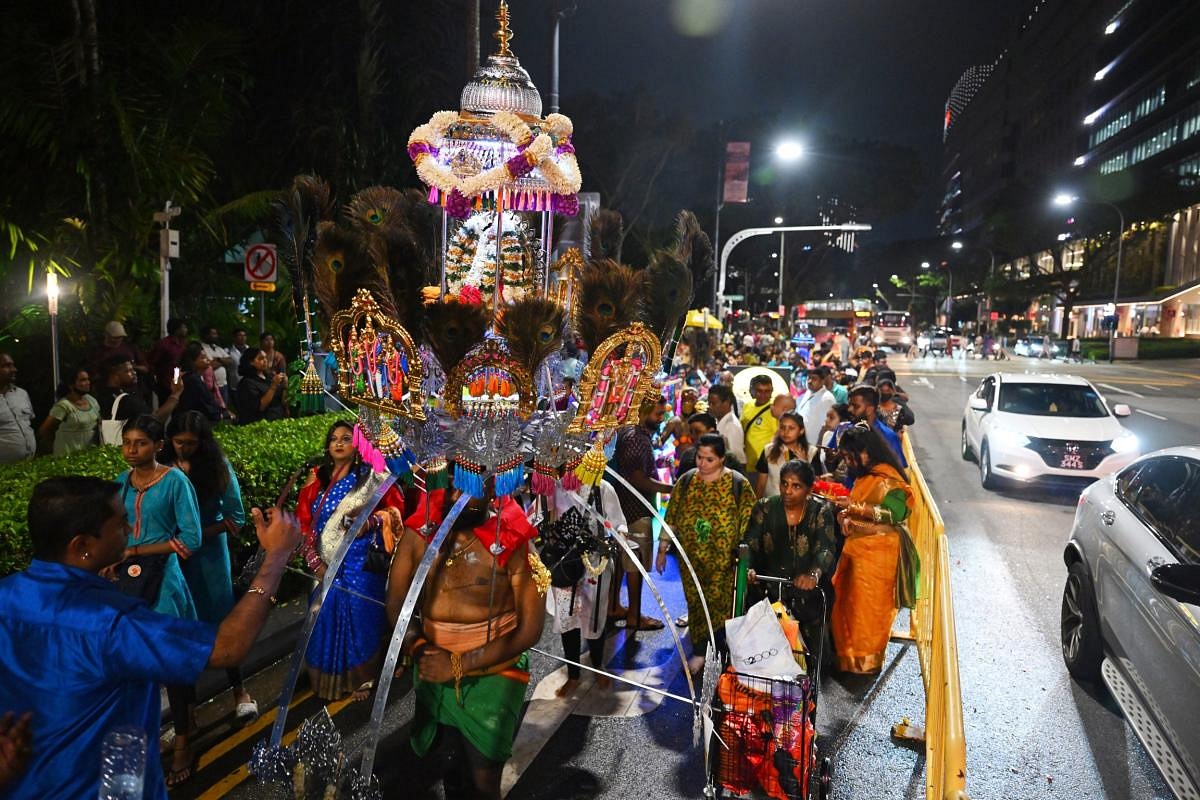

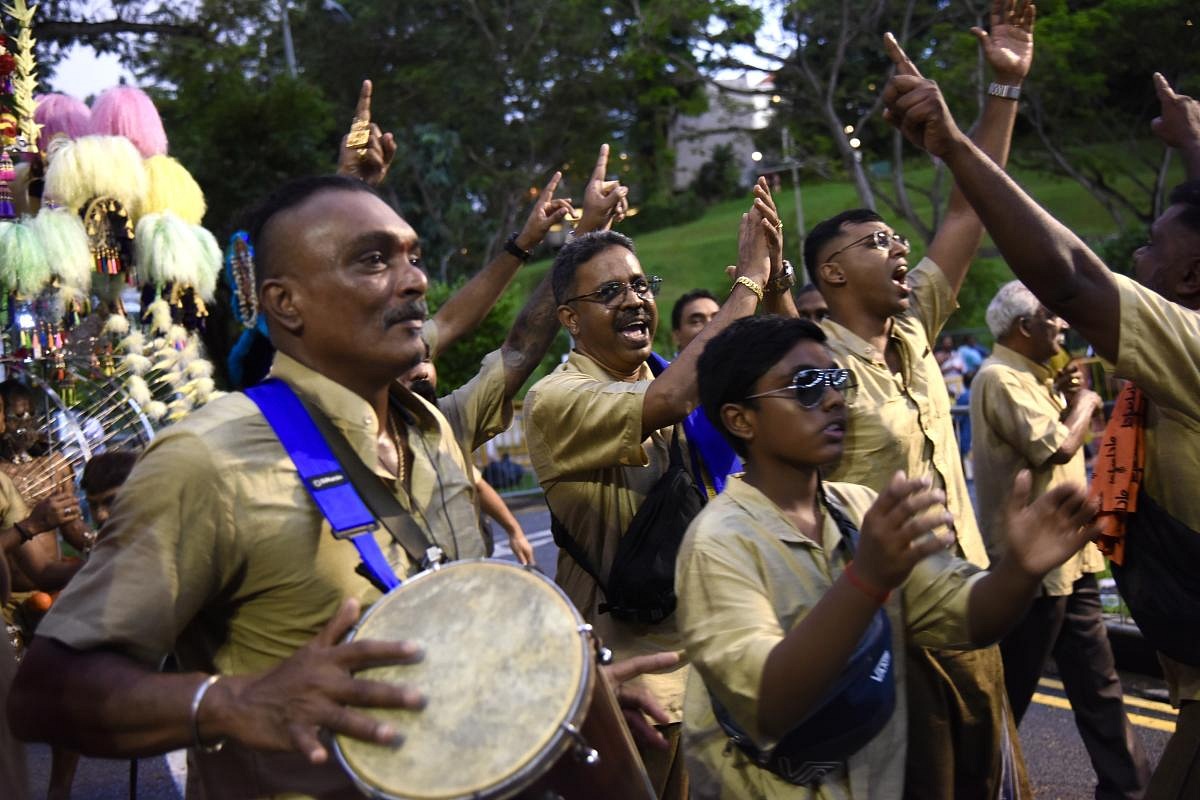
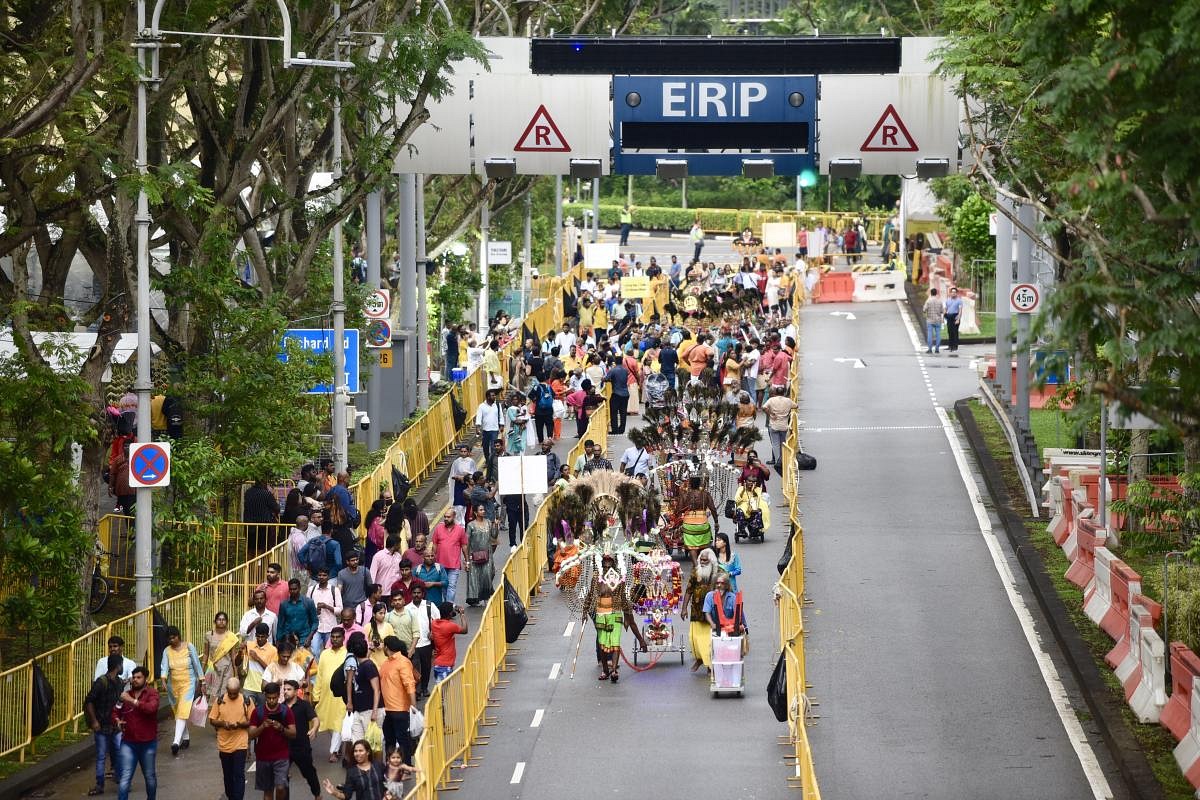

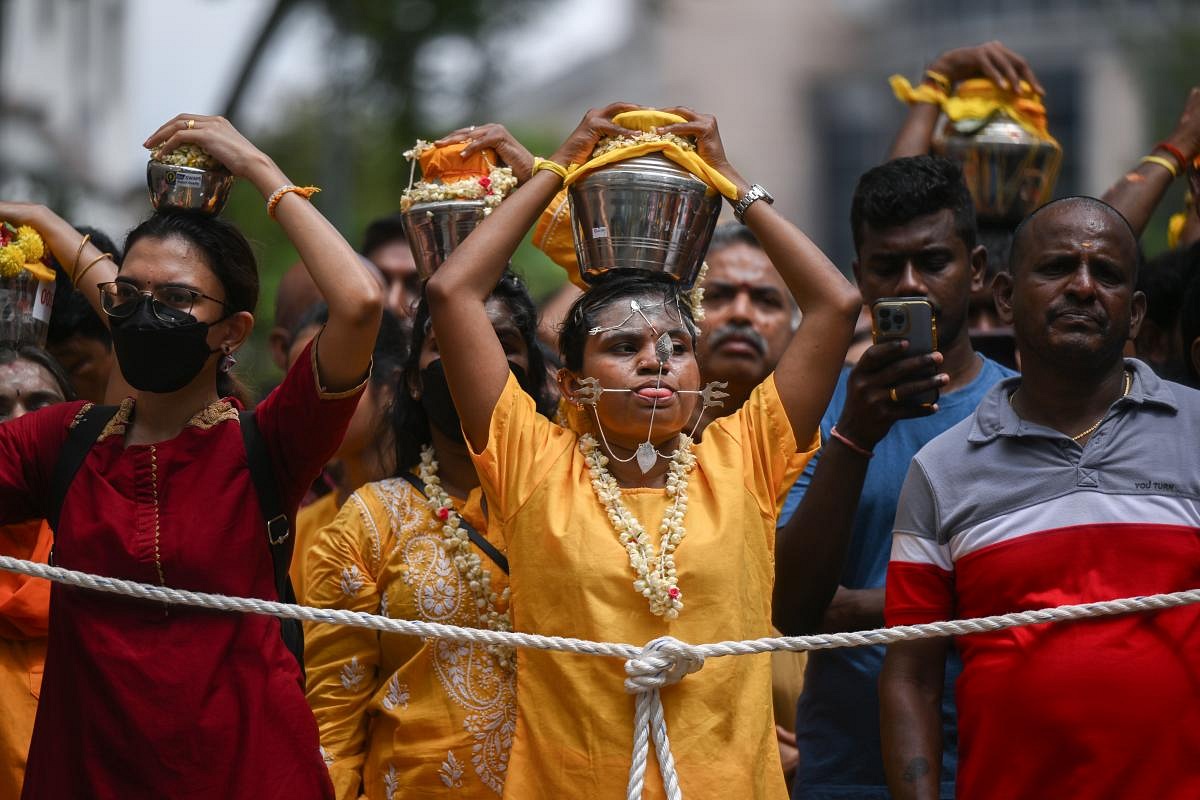
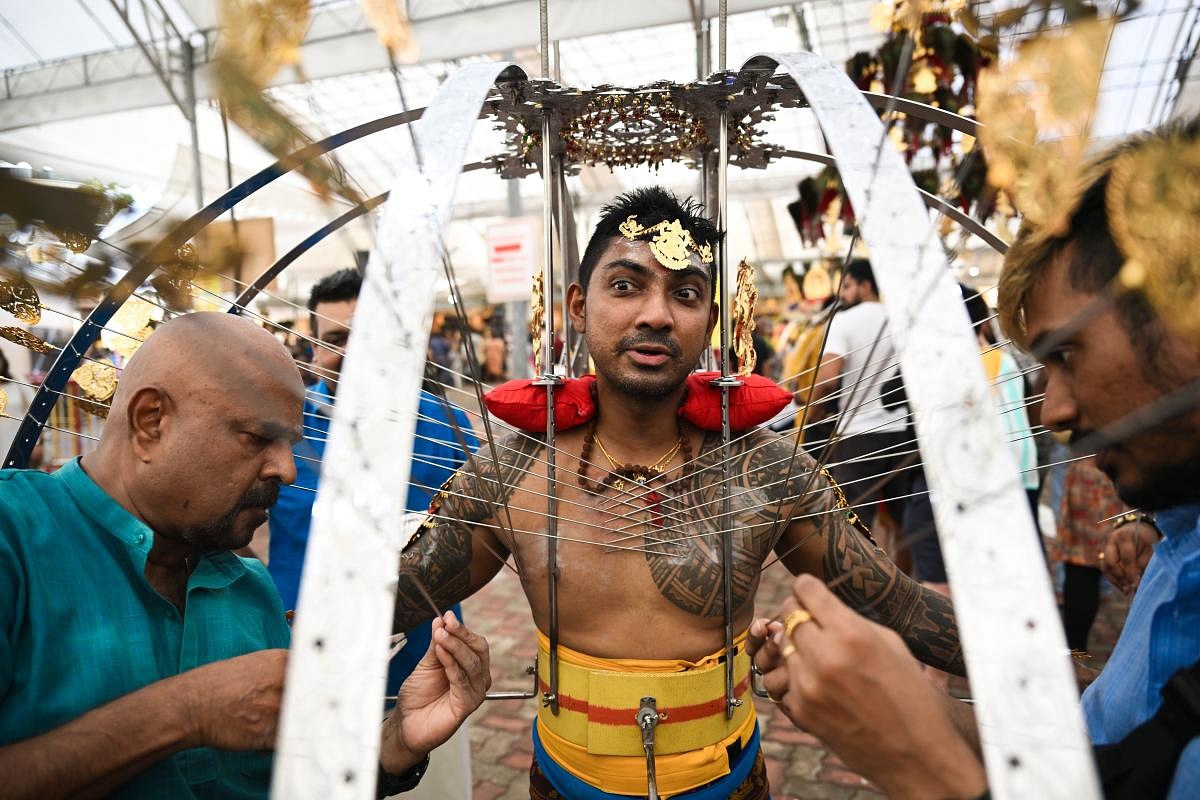
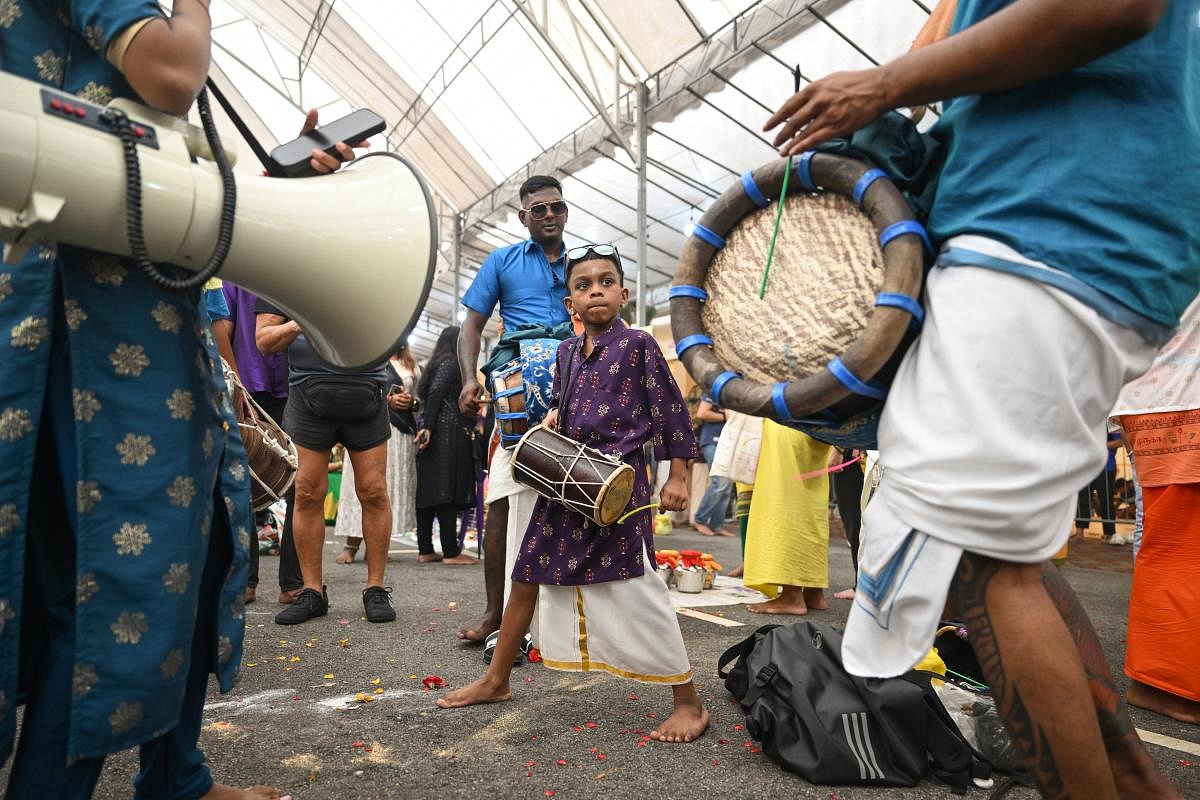
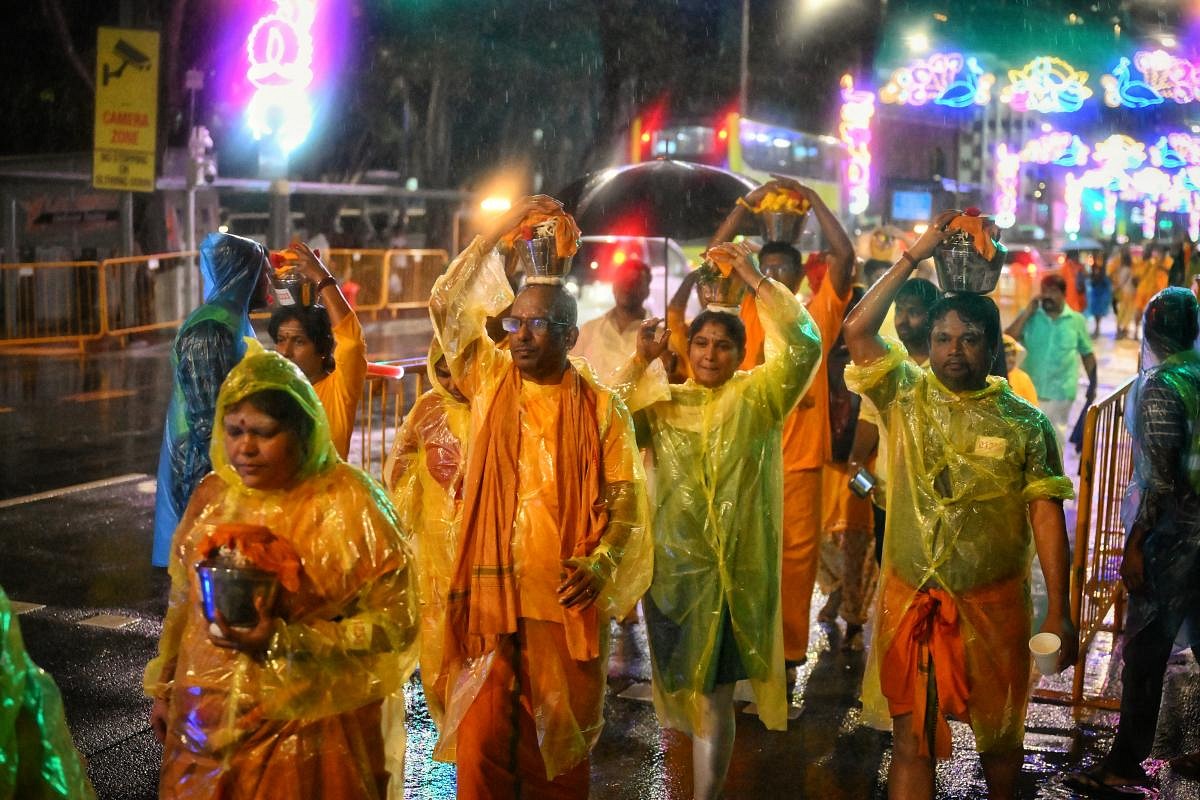
https://www.straitstimes.com/multimedia/photos/in-pictures-over-18000-devotees-take-part-in-thaipusam-festival.
…
TRIVIA
Thaipusam
| Part of the series on |
| Kaumaram |
|---|
 |
EtymologyThaipusam is a portmanteau of two Tamil words: name of the Tamil month of Thai and the name of the star Pusam.[1]
Legend
According to the Kanda Puranam (the Tamil version of the Skanda Purana), three asuras (a race of celestial beings) Surapadman, Tarakasuran, and Singamukhan performed austerities to propitiate Shiva. Shiva granted them various boons which gave them the ability to conquer the three worlds and near-immortality.[2] They subsequently oppressed other celestial beings including the devas and started a reign of tyranny in their respective realms. When the devas pleaded Shiva for his assistance, he manifested five additional heads and a divine spark emerged from each of them.[3] Initially, the wind-god Vayu carried the sparks, but the fire-god Agni took possession of them afterwards because of the unbearable heat. Agni deposited the sparks in the Ganga river. The water in the Ganga started evaporating due to intense heat, and so the goddess Ganga took them to the Saravana lake, where the sparks developed into a baby boy.[3] The six boys were raised by handmaidens known as the Kṛttikās and they were later fused into one by Parvati, thus the six-headed Murugan was born.[4]
Parvati granted him a divine spear known as the vel.[5] Murugan was accompanied by Virabahu who served as his commander-in-chief and eight others, who were sons bore by nine shaktis who arose from the gems of the broken anklet of Parvati, when she ran from her seat due to the heat generated by the sparks.[3] Along with the forces of the devas, Murugan waged war on the asuras. Murugan split Surapadman into two with his vel. The two halves transformed into a mango tree and later into a peacock and a rooster. Murugan adopted the peacock as his mount and took the rooster as his flag.[6][7]
Murugan is a deity associated with yogic discipline and austerities in Hinduism and is regarded by his adherents to be capable of offering mukti (spiritual liberation) to those who venerate him.[8]
Occurrence
Thaipusam occurs annually and is celebrated on the full moon day in the Tamil month of Thai on the confluence of star Pusam.[1]
Practices
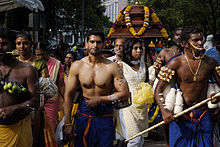
Kavadi Aattam is a ceremonial act of sacrifice and offering practiced by devotees.[9] It is a central part of Thaipusam and emphasizes debt bondage. Kavadi (meaning “burden” in Tamil) itself is a physical burden carried by the devotee, the bearing of which is used by the devotee to implore Murugan for assistance, usually on behalf of a loved one who is in need of healing, or as a means of balancing a spiritual debt.[10] Worshipers may carry a pot of cow milk as an offering and also do a form of mortification of the flesh by piercing the skin, tongue or cheeks with vel skewers.[11] Since public self mutilation is prohibited by Indian law, practices are limited.[12][1] Drumming and chanting of verses help them enter a state of trance and Vibuthi, a type of holy ash is spread across the body including the piercing sites.[11] Devotees prepare for the rituals by keeping clean, doing regular prayers, following a vegetarian diet and fasting while remaining celibate.[13] They make pilgrimage with bare feet and dance along the route while bearing these burdens.[14]
Areas of practice
India
Thai pusam is a major festival in the Murugan temples including the six abodes in South India.[14] In Dhandayuthapani Swamy Temple in Palani, the festival is celebrated over ten days known as Brahmotsavam.[15][16] At Subramaniya Swamy Temple, Tiruchendur, where Murugan was supposed to have emerged victorious against the asuras, the festival attracts lakhs of pilgrims every year for the ritual procession.[17] A float festival is held every year in the temple tanks in Meenakshi Temple in Madurai and Kapaleeshwarar Temple, Mylapore, Chennai.[18][19] The festival is also observed as Thaipooyam Mahotsavam in Kerala.[20] In 2021, the festival was declared a public holiday in the Indian state of Tamil Nadu.[21]
Outside India

While the festival originated in India, the same spread across other countries with significant Tamil diaspora.[22] It is celebrated in a much larger scale in some of the countries outside India.[1] It is celebrated in South East Asia notably in Malaysia, Singapore, Sri Lanka, Thailand, Indonesia and Myanmar, other countries with significant people of Tamil origin like Fiji, Mauritius, Seychelles, Reunion, South Africa and Canada, Caribbean countries including Trinidad and Tobago, Guyana and Suriname, countries with significant Indian migrants including United States and Australia.[11]
In Malaysia, the festival attracts thousands of people for the elaborate festivities at Batu Caves near Kuala Lumpur and Arulmigu Balathandayuthapani Temple, Penang.[23][24] In Singapore, devotees start the procession at Sri Srinivasa Perumal Temple carrying milk pots and kavadis with spikes pierced on their body and proceeds towards Sri Thendayuthapani Temple.[25] Thaipusam in Mauritius is celebrated with thousands of attendees taking the ritual ‘Cavadee’ from Kovil Montagne.[26] In South Africa, Thaipusam Kavady is celebrated in Durban, Clairwood Shree Siva Soobramonior Temple in Cape Town and Shree Sivasubramaniar Alayam in Palm Ridge.[27] At Fiji, the festival is celebrated at Sri Siva Subrahmanya Swami Temple in Nadi town and at the Sri Raj Mahamariamman Temple in Suva.[28] In Indonesia, processions are Medan and Palani Andawer Temple, Aceh. At Medan, pilgrims accompany a hundred year old chariot locally known as Radhoo to Sri Mariamman Temple at Kampung Madras.[29] In the US, the festival is celebrated in various Hindu temples across the country.[30]
It is a national holiday in Mauritius and a state holiday in Kuala Lumpur, Johor, Negeri Sembilan, Penang, Perak, Putrajaya and Selangor in Malaysia.[31][32] It was a declared national holiday in Singapore till 1968.[33]

@[email protected]

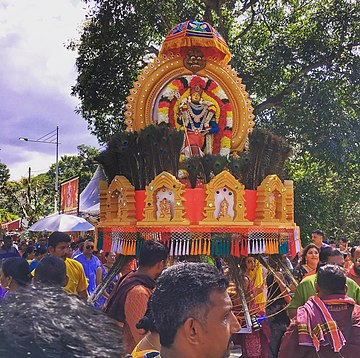
 Memento Maxima Digital Marketing
Memento Maxima Digital Marketing





